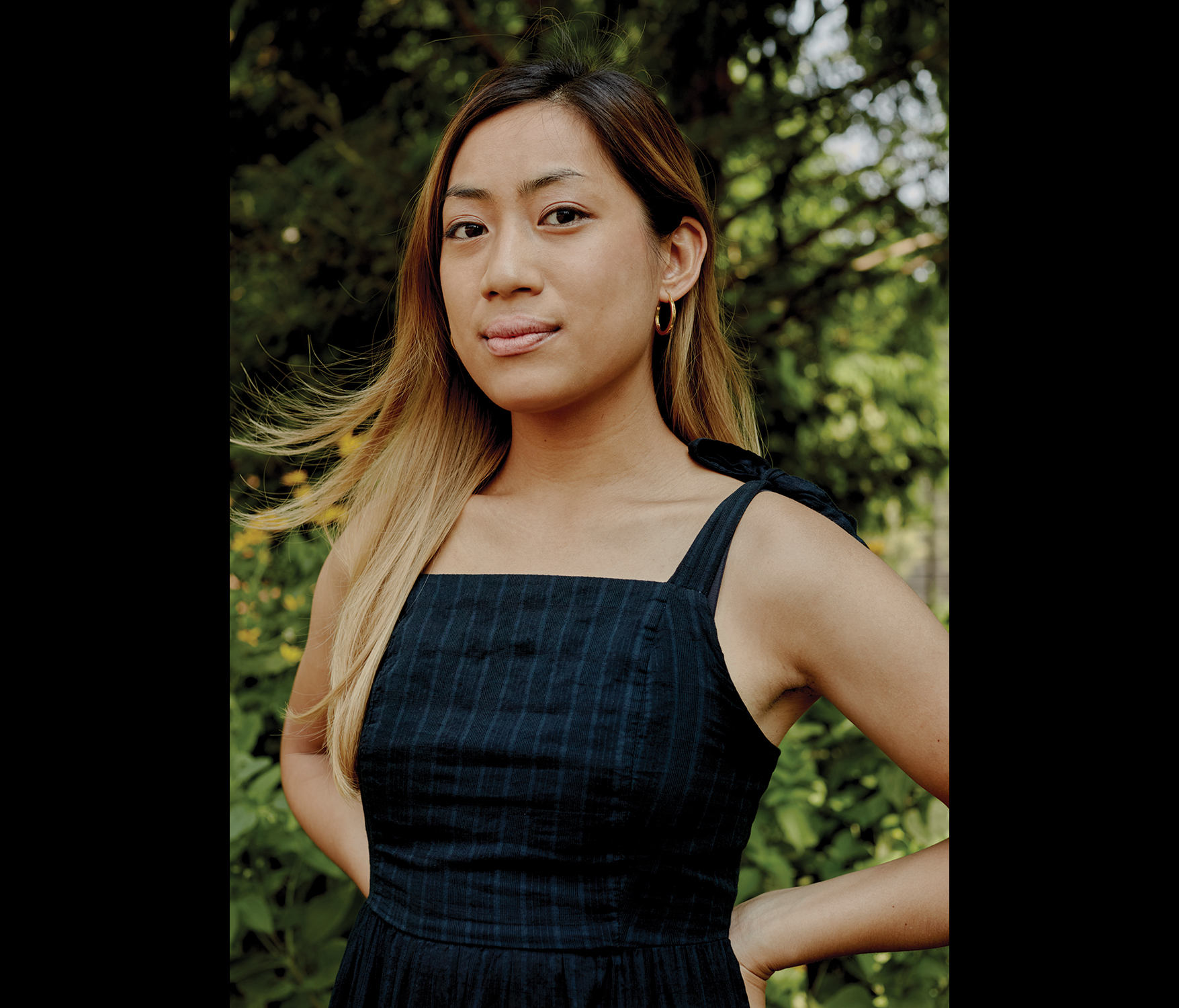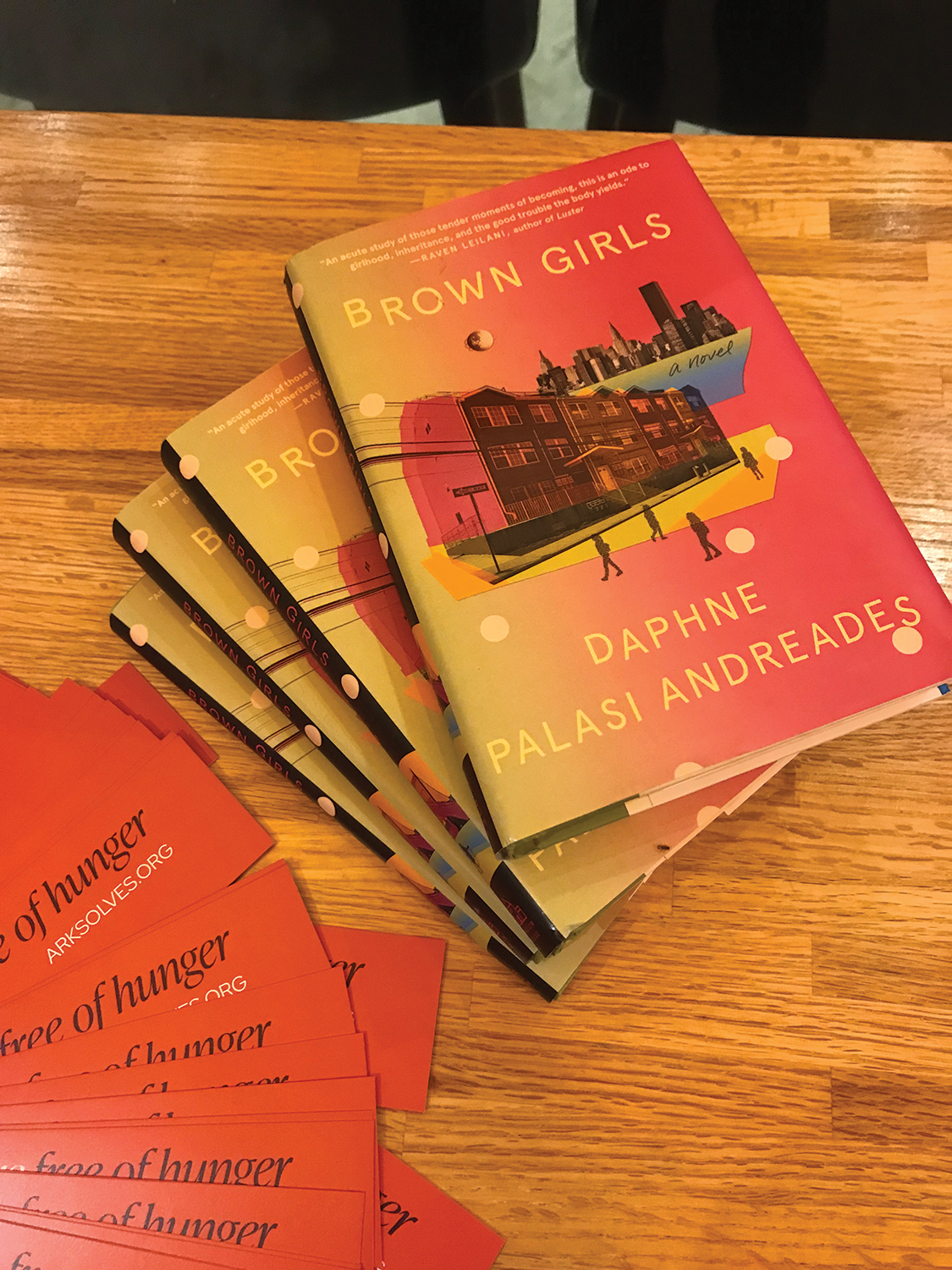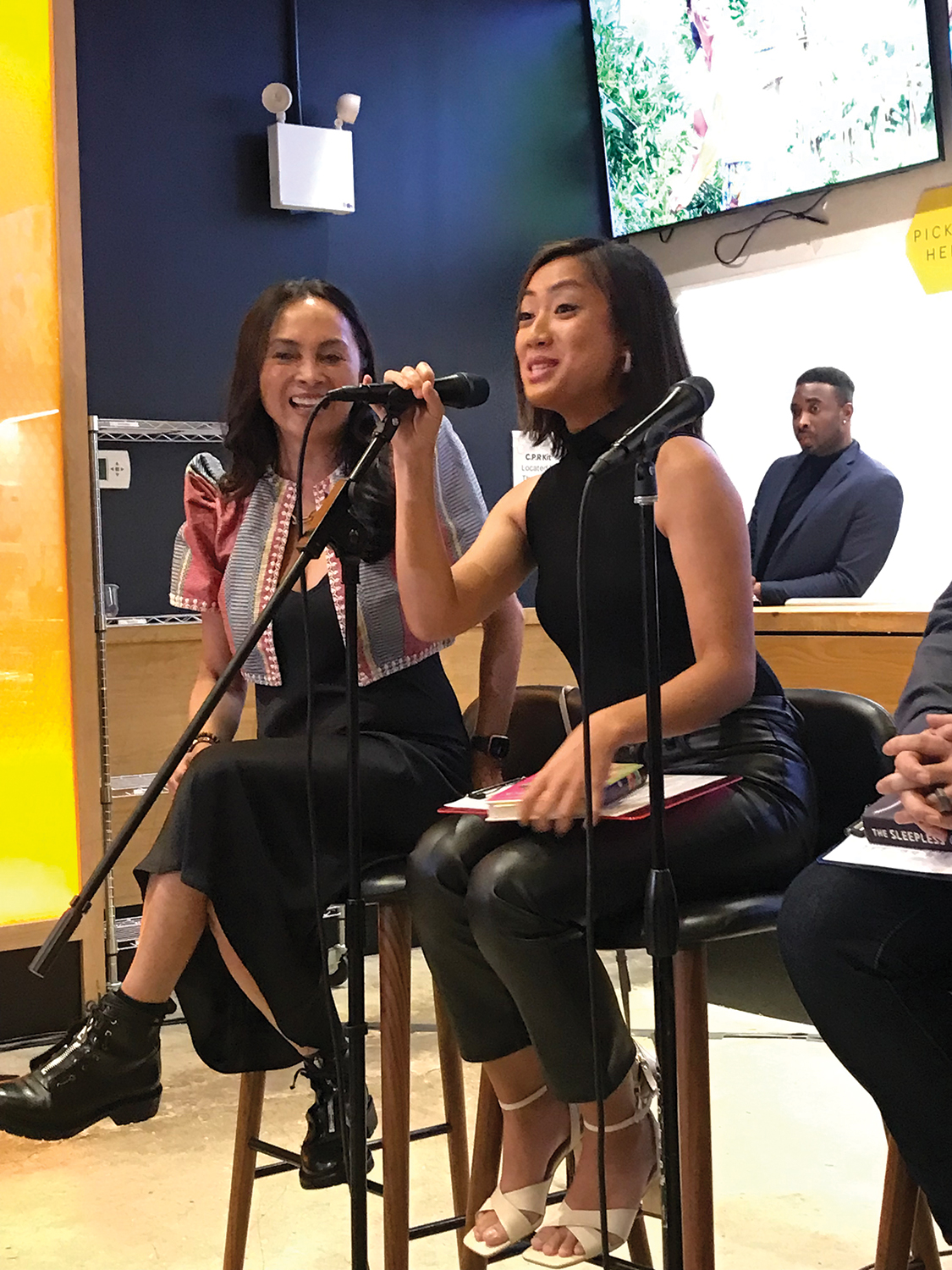
Daphne Palasi Andreades was a second-year graduate student pursuing an MFA in fiction writing at Columbia University when she first heard a quote by the author Toni Morrison: “If there is a book you want to read, but it has not been written yet, then you must be the one to write it.”
“My workshop professor, Elissa Schappell, mentioned it in class one day, and they were the right words that I needed to hear at the right time. Prior to this, I had been struggling in the program—I didn’t have many peers who were immigrant kids or writers of color, nor faculty members I could turn to; the authors we read in class were ones I respected and admired, but who were predominantly white,” she recalled. “It was also 2017 and, in the larger world, Trump had just been elected. Anti-immigrant sentiment increased. In many ways, I felt erased and voiceless.”

Inspired by the quote, the aspiring Filipino American novelist felt empowered to write. She asked herself a question: ‘What is the story that I am longing to read, but don’t see depicted in art or literature?’
Andreades realized that it was a story that centered immigrants and communities of color, in all their beauty and complexity.
“I also wanted to set the book in Queens, New York, my hometown, a place that is the most ethnically and linguistically diverse place in the entire U.S.—yet one not really represented in art,” she shared. “I wanted to change this narrative.”
That book is Brown Girls, her first novel. It is now a New York Times Editors’ Choice, a Finalist for the New American Voices Award, and featured in The Center for Fiction’s 2022 First Novel Prize. CUNY Baruch College, her alma mater, picked the book for their incoming freshmen to read.
Born and raised in Queens to Filipino parents from Baguio City, Andreades holds an MFA from Columbia University, where she was awarded a Henfield Prize and a Creative Writing Teaching Fellowship.

“This book is a culmination of years of hard work and determination,” Andreades told the Asian Journal. “I hope other people—women, immigrants, people of color, and folks from Queens, New York, especially—see themselves and their lives reflected in these pages. I hope it inspires other young people interested in the arts, especially if they are the children of immigrants, to work hard and pursue their dreams.”
Andreades describes writing her debut novel as challenging for many reasons—the stress of feeling out of place and alienated at school, the hardships of the pandemic, and her own self-doubt.
Despite wanting to give up so many times, she pulled back and kept returning to the work. The process of writing a book taught her that perseverance is essential.
“Writing Brown Girls also pushed me to take creative risks. For example, my novel is told through a chorus of voices. I use an unconventional point-of-view, the “we,” which means that there’s no single protagonist, but a symphony of women’s voices,” she explained. “By using this unconventional perspective, I wanted to highlight the shared experiences—of immigration, assimilation, and dealing with marginalization in the U.S.—and histories between people of color, across different ethnicities and diasporas.”
In our Q-and-A, Andreades shared her journey, how she overcame the challenges along the way, and how immigrant writers and their stories fueled her desire to become a writer herself.

How long did you work on Brown Girls?
I worked on Brown Girls for four-and-a-half years. I started it in 2017 when I was a second-year MFA student and continued working on it after I graduated, from 2018 to 2020, while I was also juggling various jobs teaching, copywriting, and working in a restaurant. These different gigs allowed me to write in the morning, which is what I prefer. However, in February 2020, I promised myself that, come spring, I would double down on finishing my novel.
However, March 2020 came and the COVID-19 pandemic swept through New York City and the rest of the world. It was an extremely difficult time—I was furloughed from my jobs and worried for my family members who are healthcare workers. My mother and brother, specifically, were nurses at Elmhurst Hospital in Queens, which was called “the epicenter of the epicenter.”
During this time, I contemplated giving up on writing. However, I kept going because making art was an outlet to both escape the world and confront it, to grieve and to heal, and a way to have a voice when I felt voiceless. In May 2020, I finished a draft of Brown Girls that I was proud of.
In June 2020, I sent the manuscript to trusted readers and incorporated their feedback. In July 2020, I signed with my now agent. In September 2020, we sold the book to Random House. My editor, Marie Pantojan, is Filipino. It has been so meaningful to collaborate with her on Brown Girls.
What was it like when you held the book for the first time?
Holding the book in my hands for the first time was amazing, surreal, and joyous. Brown Girls has been out for almost a year now! However, the paperback edition publishes this November.
The book is a celebration of Queens and bits of Filipino culture – did you have that dream when you were younger, of coming up with a culturally-specific book?
Ever since I was in high school, it was a dream and a goal to become a writer and publish a book that centered on the lives of immigrants. As a teen, I encountered work by contemporary authors who were immigrants and wrote about immigrant communities—novels and short story collections by Jhumpa Lahiri, Edwidge Danticat, Zadie Smith, and Julie Otsuka, to name a few.
Their work made a huge impression on me. I recognized myself and my experiences in their fiction. Their work also made me think: ‘If they could do it, then maybe I could, too.’ Later, in college and graduate school, I read work by Filipino American authors Jessica Hagedorn, Lysley Tenorio, and Mia Alvar, who further fueled my desire to become a writer.
I believe that all of these authors paved the way for me, and other young, emerging artists who are immigrants and people of color, to tell our stories. I’m indebted to these authors and hope that my work inspires other young artists in the future, too.
What is your writing process like?
An important part of my writing process is keeping a journal. I’ve kept a journal since I was seven years old. My aunt gave my first one for Christmas, and it’s been a practice I’ve had ever since. Keeping a journal is a space for me to jot down my thoughts, observations, overheard bits of dialogue, lyrics, dreams, lists, images, everything. In short, it’s a great way to observe the world and capture it through language.
In my journals, I also work out ideas and scenes for my fiction. I prefer to write my first drafts by longhand, rather than on the computer. Something about writing by longhand feels lower stakes to me; I am looser, less self-conscious, and I let myself make a mess on the page, which is what I think writing a first draft is all about!
After some time, I transcribe my journals onto the computer; through this process, I also come up with another draft, the first of dozens. I love revision—trying to find the verb or adjective that captures what I want to evoke, adding scenes, thinking of a story’s structure, and deepening the story’s themes and characters, are both challenging and fun.
Where are you based now? How long have you been based there?
I am based in New York City. New York is a place that really inspires me—the mix of people all living together, the sights, sounds, smells. However, I love to travel but haven’t gotten to do much of it because of the pandemic these past two years. But I plan to travel again in 2023. I could see myself living in other cities in the future and allowing those places to influence my writing.
Where are your parents from in the Philippines?
My parents are from the Cordillera region of the Philippines.
When was the last time you traveled there? Any fond memories?
The last time I visited the Philippines was seven years ago. I had just gotten married and traveled with my husband, who is also from New York and an artist, to meet my relatives and to see parts of the country. It was really special to experience the Philippines together. We loved traveling to Sagada and exploring the Sagada Caves, though it was also terrifying! We visited Bontoc, Banaue, and stayed with my cousins in Baguio. I loved seeing art at BenCab Museum and Easter Weaving.
I will also be traveling to the Philippines this spring and am so excited!






